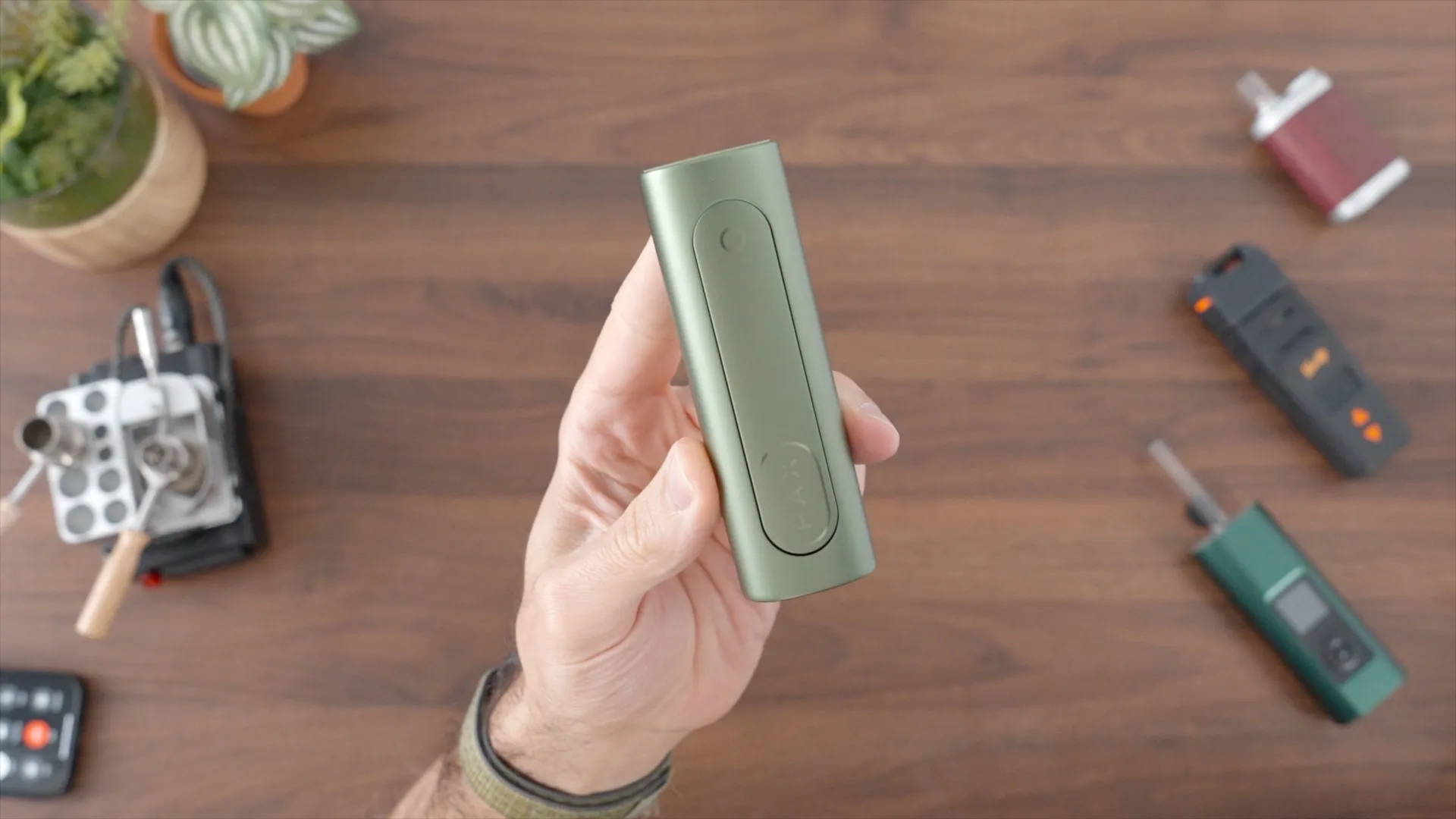
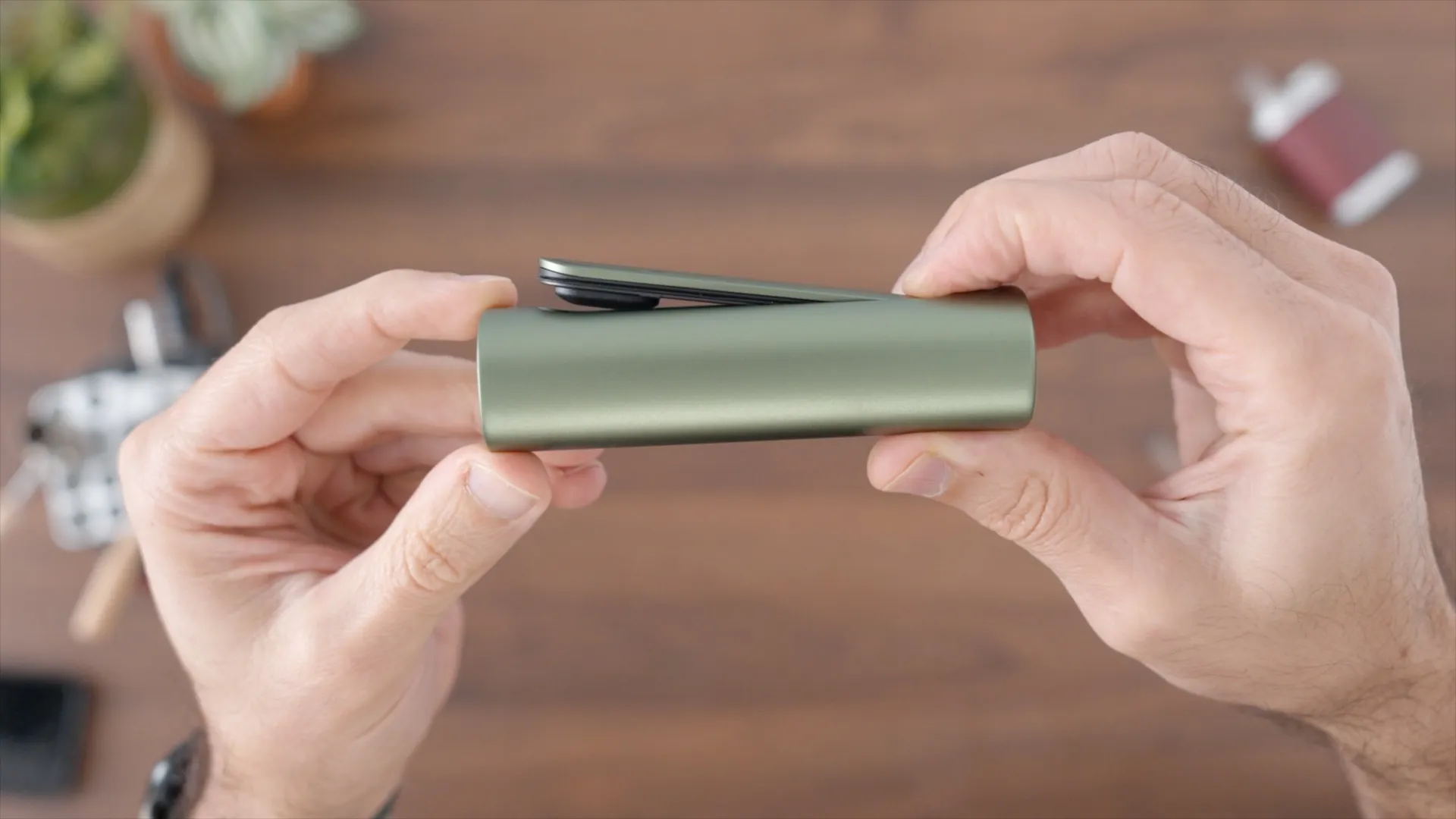


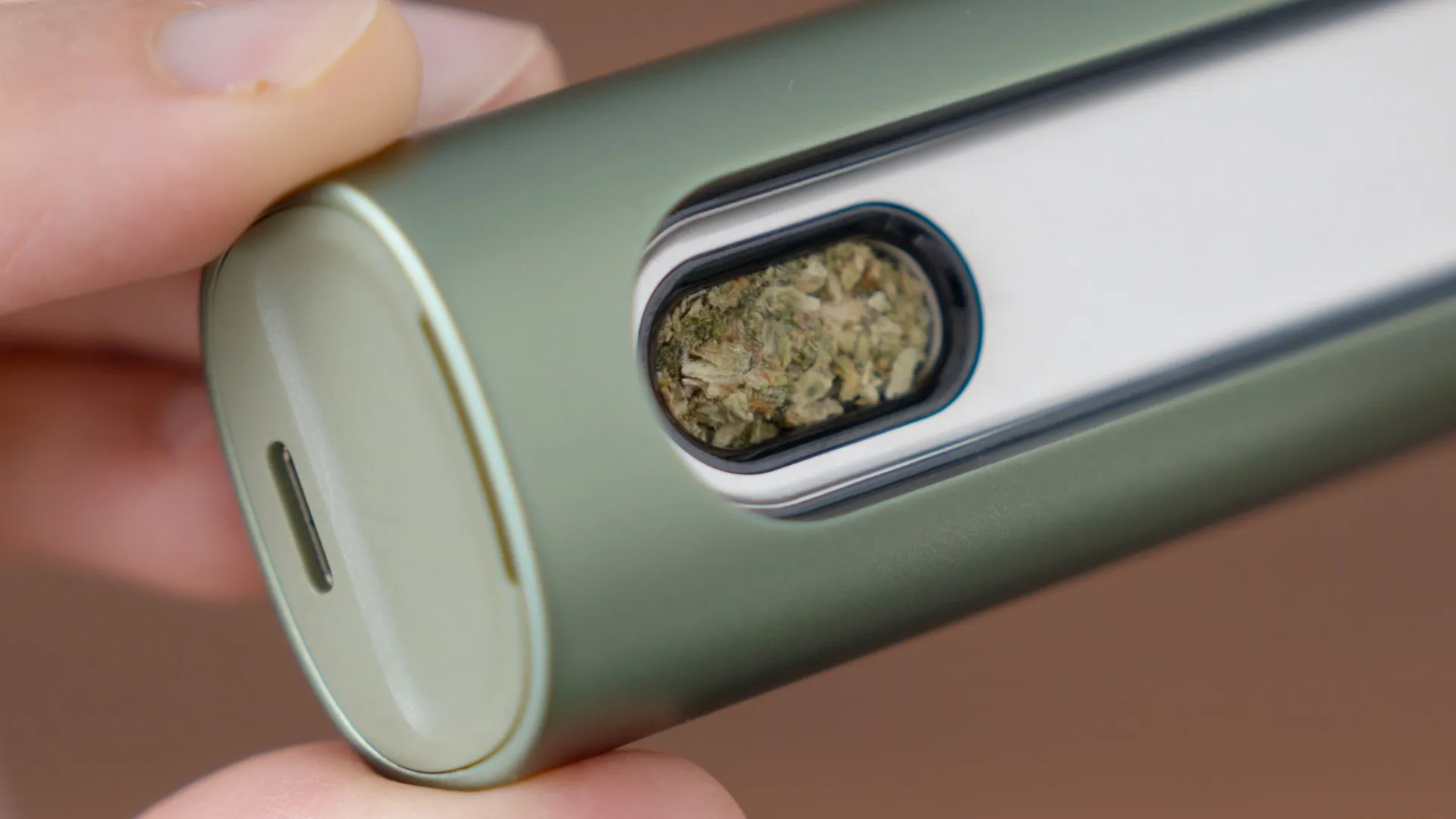


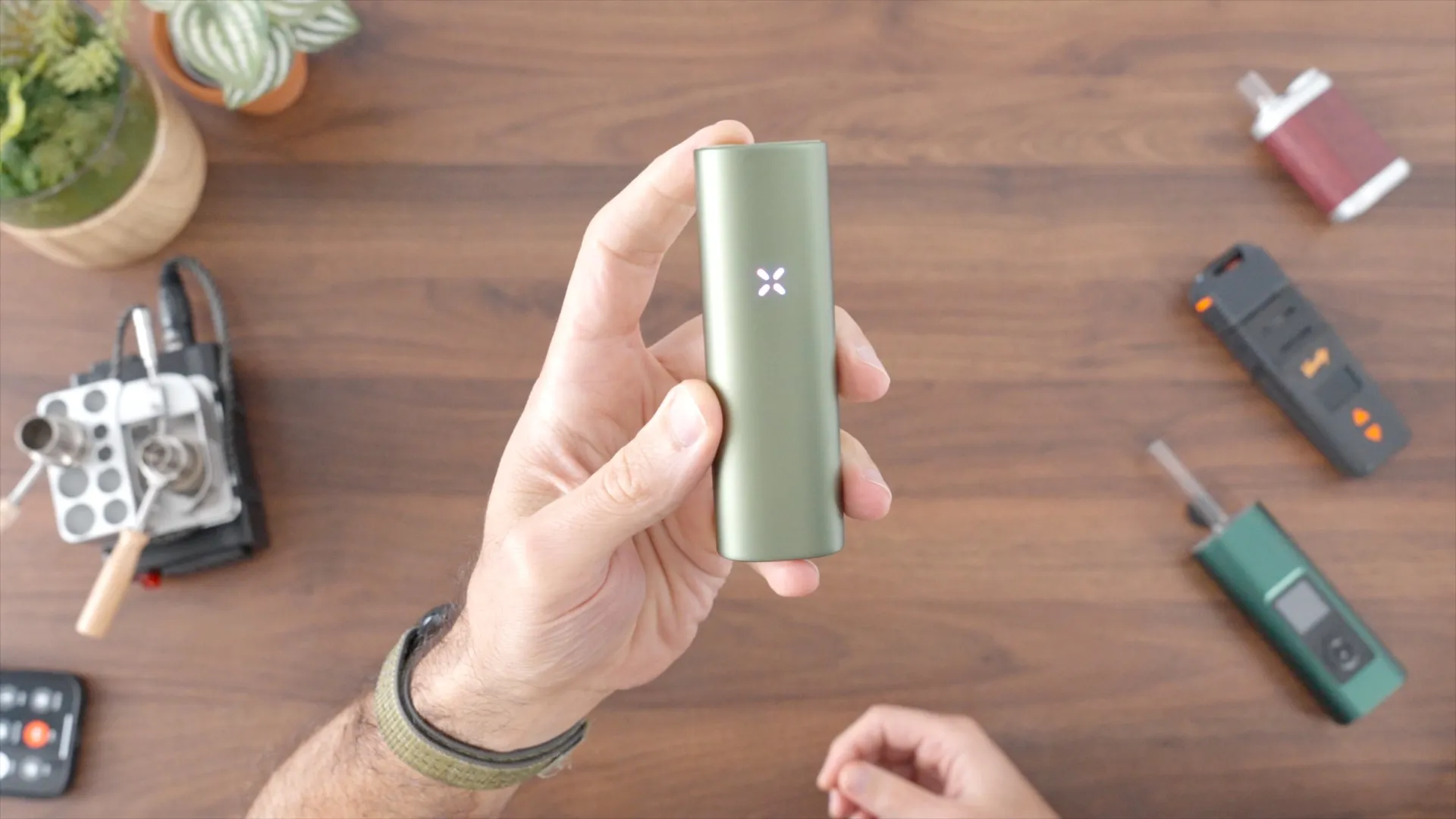
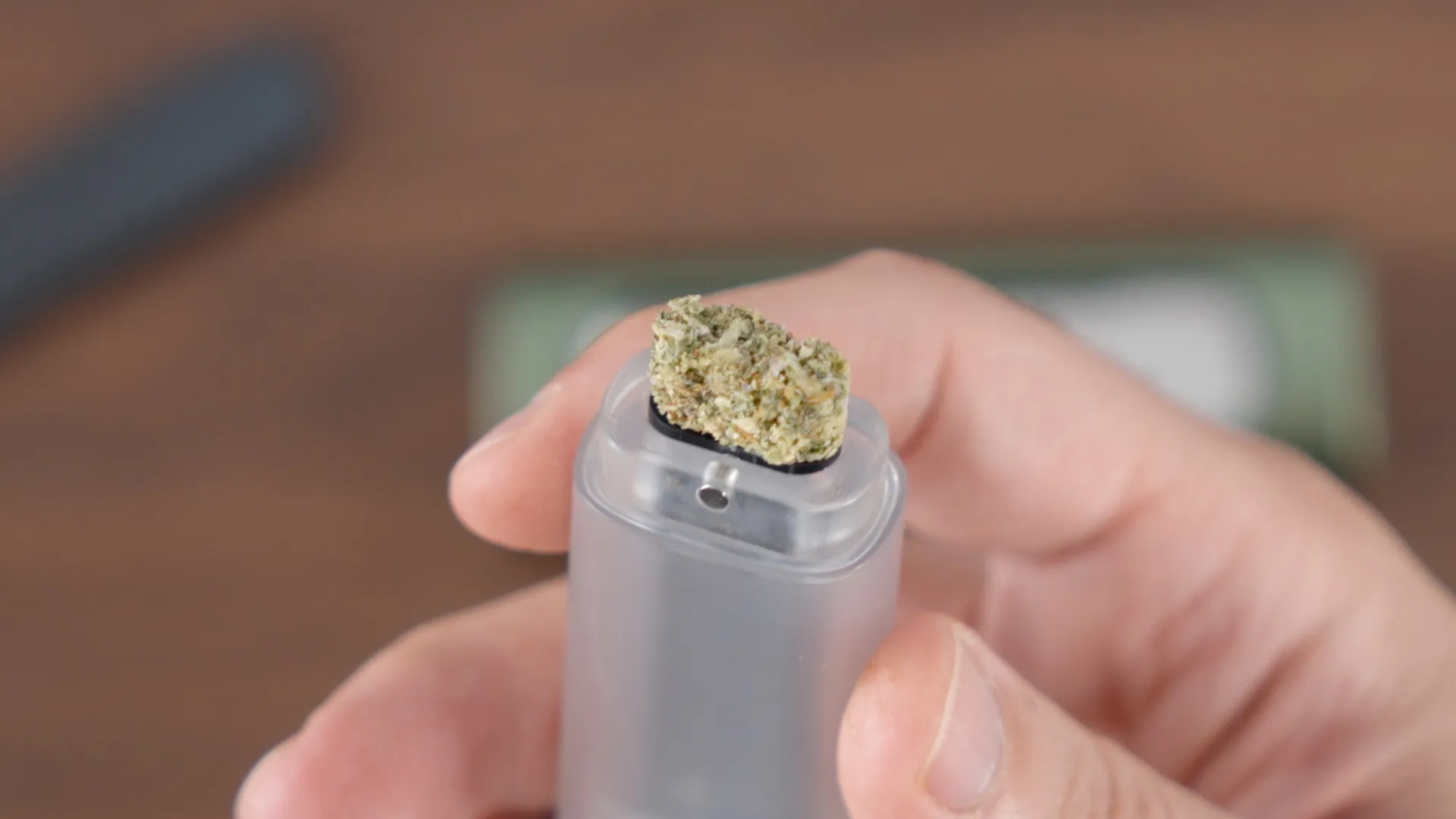
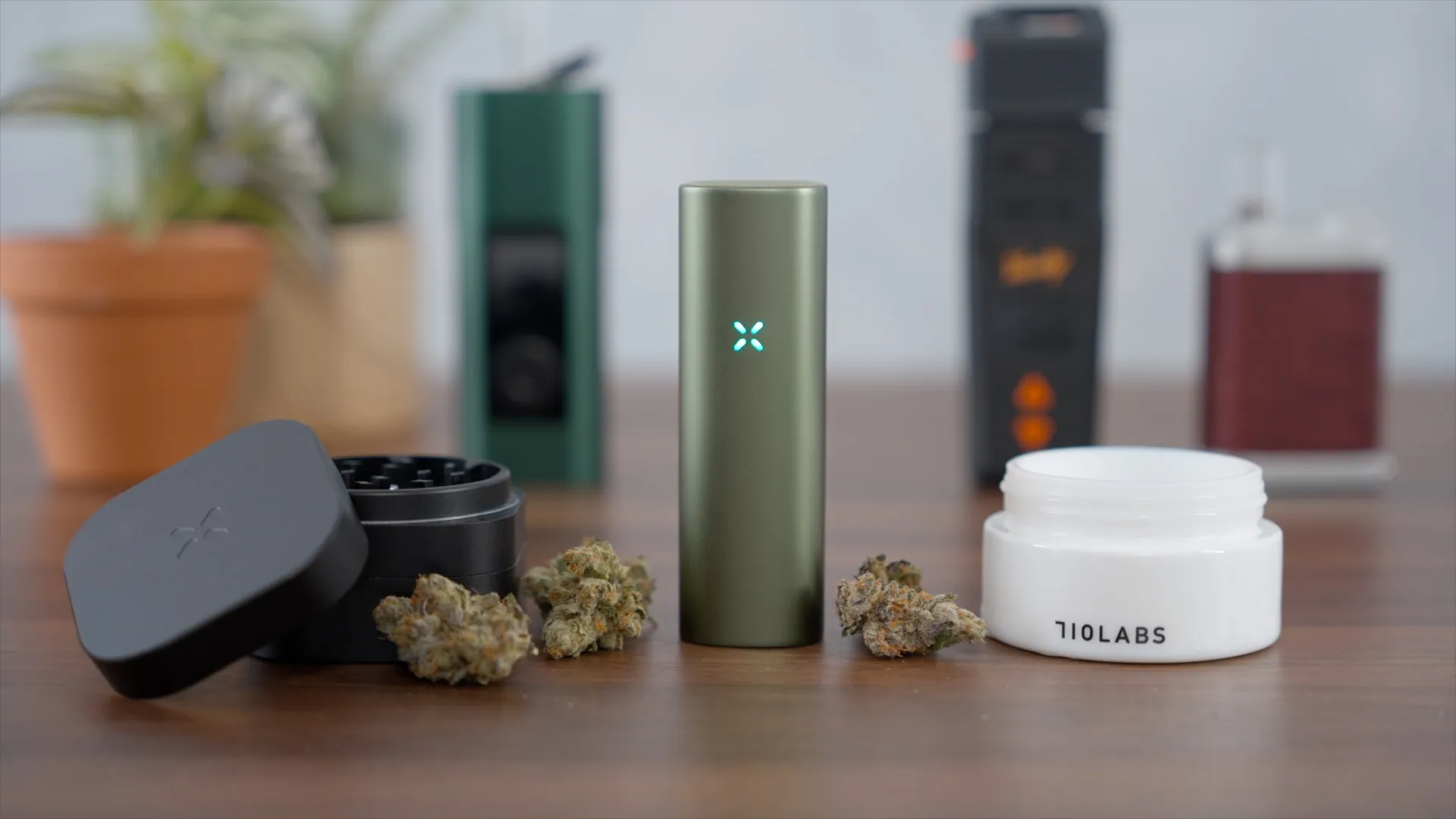
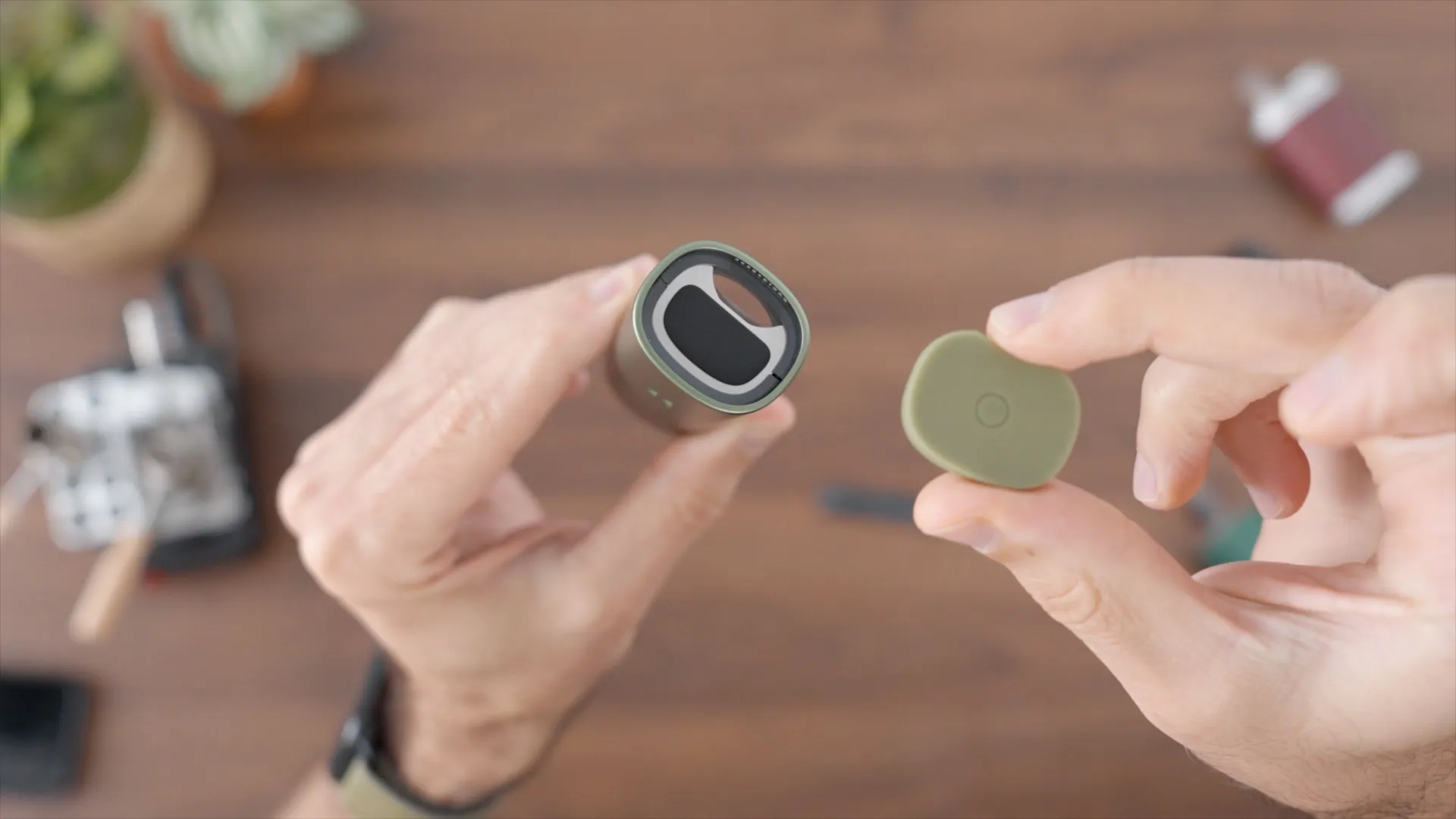
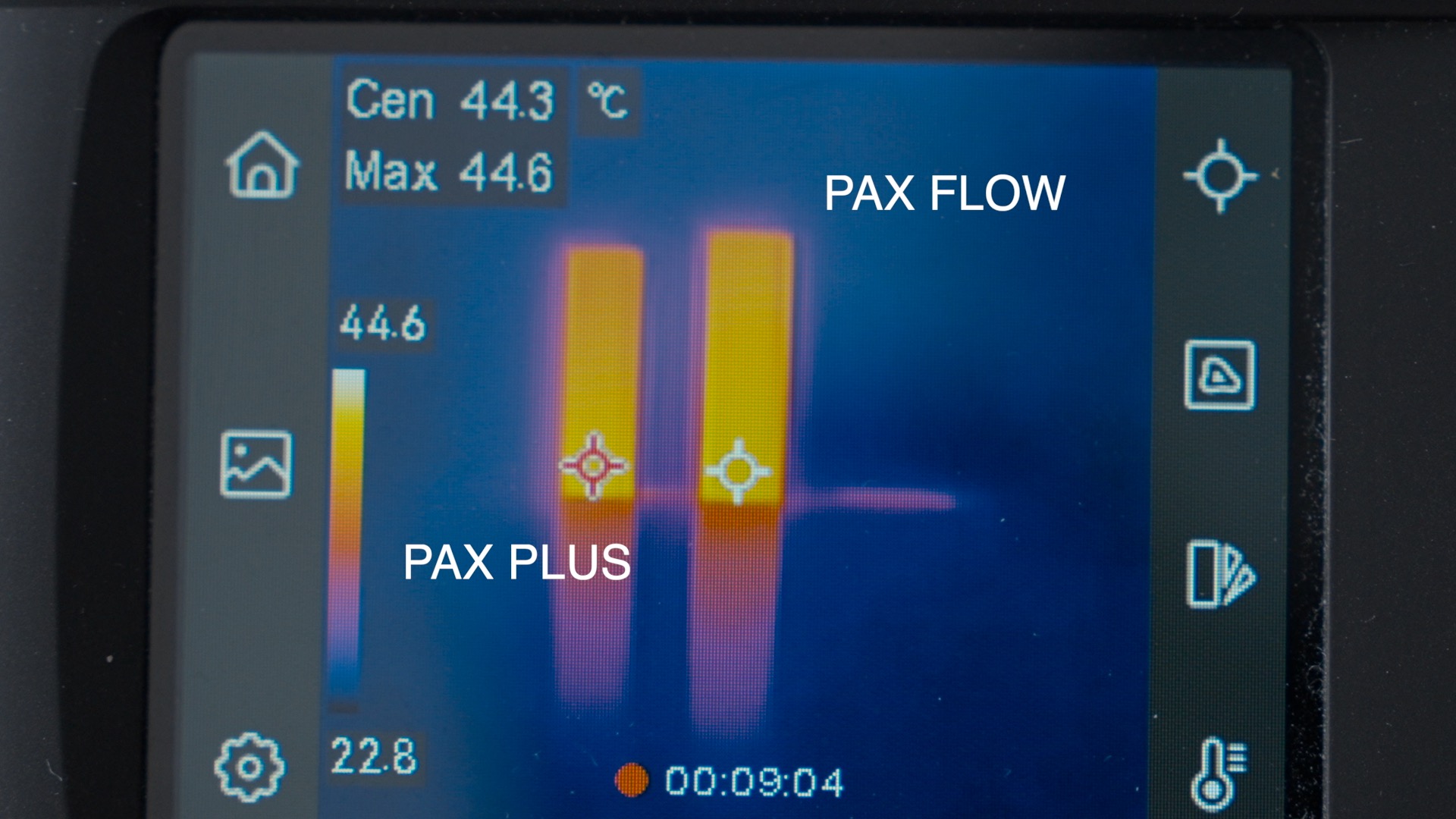
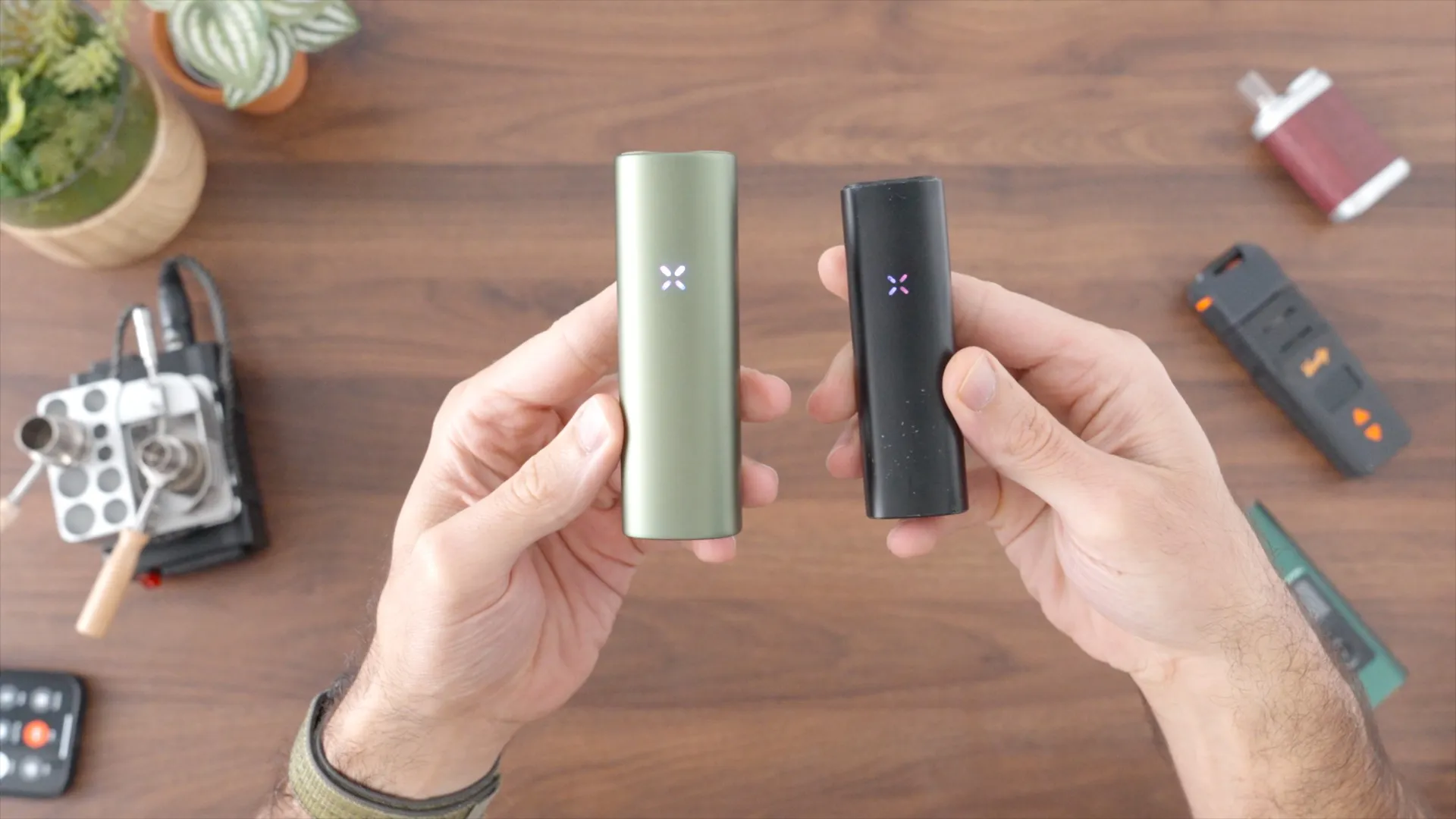
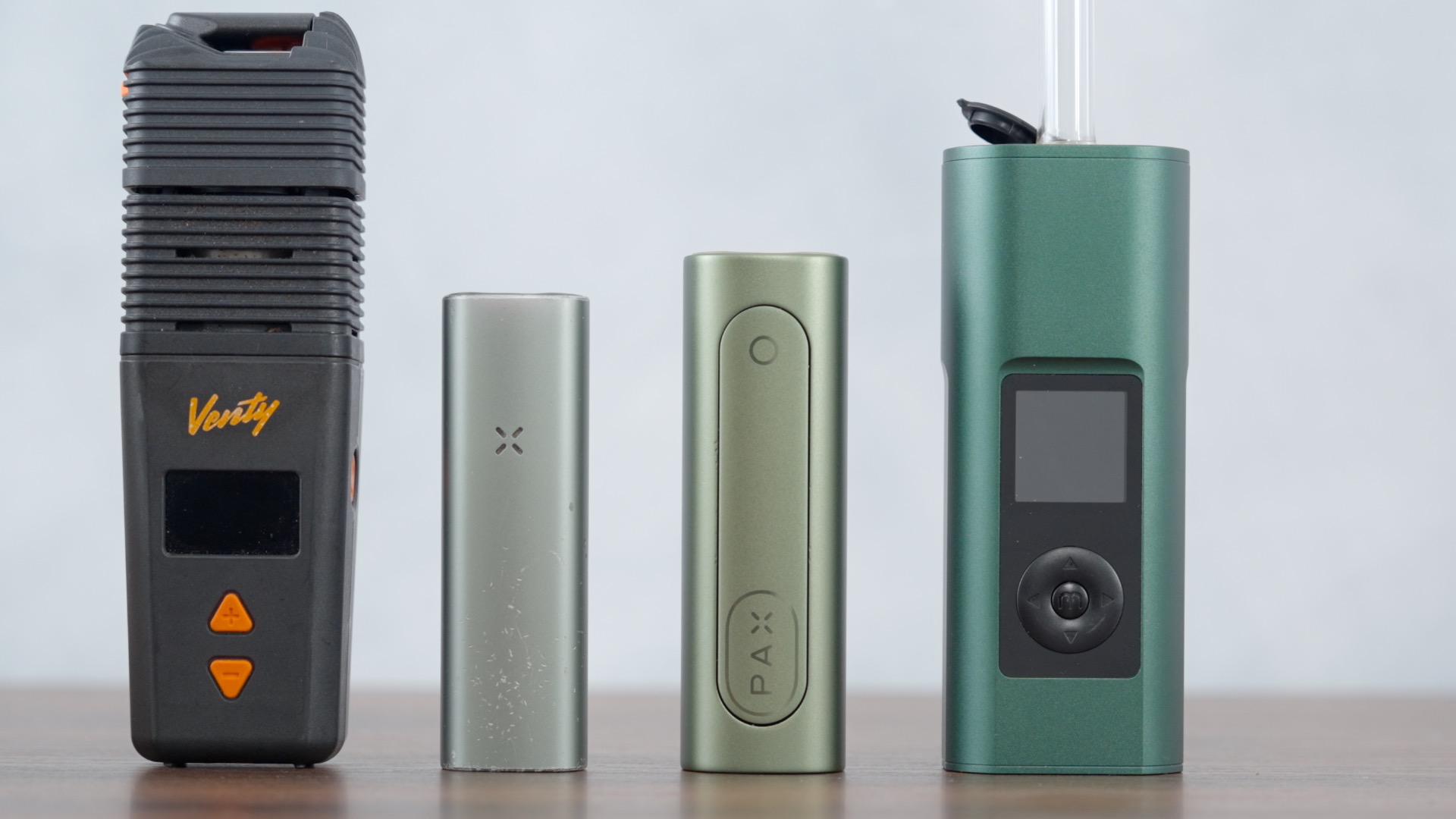
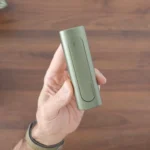

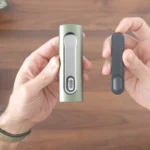




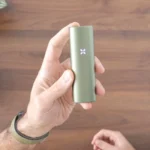

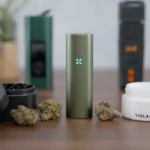
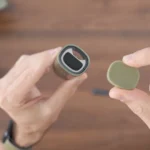

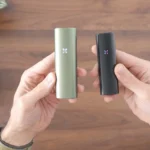

Review Summary
Pax FLOW is the brand’s first true redesign since the original Pax 1 (2012), and at $350 it’s a clear step forward. Taller, thicker, and heavier than the Plus—but still pocketable—it moves the oven to the side/top with a capacity of about 0.3 g. The new hybrid convection–conduction heater finally solves Pax’s long-standing edge-hot/center-cool issue, delivering even extraction. Airflow is vastly improved thanks to a wide, fully accessible vapor path beneath the cover. The main drawback: the shell still gets uncomfortably hot by the end of a session. Overall, this is the best Pax yet, offering the strongest size-to-performance ratio you’ll find in 2025 with substantial improvements, especially appealing to current Pax owners looking for an upgrade.
- • #2 on Best New Vaporizers
✓ Pros
- Hybrid convection–conduction heating finally solves Pax’s uneven roast issue, delivering even extraction.
- Wide-open airflow with smooth, comfortable vapor, competitive with bigger devices like the Venty.
- Sleek, pocketable design despite being larger and heavier than the Pax Plus.
- Simple one-button controls with five preset Experience Modes.
- Easy cleaning thanks to the side oven and fully accessible vapor path.
- Fast USB-C charging (0–50% in ~20 min, full in ~40 min).
✗ Cons
- Gets uncomfortably hot during extended use, especially in Boost and Bong modes.
- Shorter battery life than some competitors (4–6 sessions per charge, non-replaceable battery).
- Premium price ($350) with strong competitors offering more raw performance for the same or less.
- Performance ceiling—doesn’t hit as hard as top-tier convection vapes like the Tinymight 2 or Venty.
Pricing Info ⓘ
Comparison

Pax Flow
|

Pax Plus
|
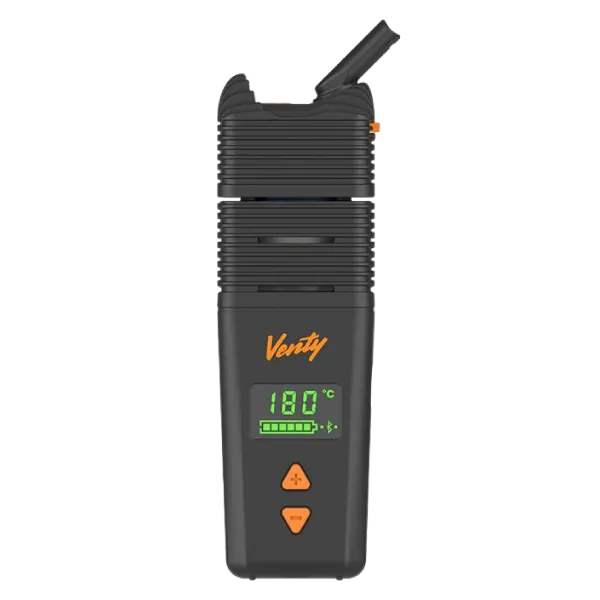
S&B Venty
|

Arizer Solo 3 (V2)
|
|
|---|---|---|---|---|
| Score (1-5) |
- Current Review |
4.7 |
4.8 |
4.9 |
| Brand | Pax | Pax | Storz & Bickel | Arizer |
| Retail Price |
$350.00 |
$200.00 |
$449.00 |
$299.00 |
| Release Date | August 2025 | November 2022 | October 2023 | April 2025 |
| Compatible With | Dry Herb | Dry Herb | Dry Herb | Dry Herb, Aromatherapy |
| Heating Method | Hybrid | Conduction | Hybrid | 80% Convection / 20% Conduction |
| Vaping Style | Session | Session | Session | Session + On-demand |
| Body Material | Aluminum | Metal | PEEK | Aluminum |
| Mouthpiece Material | Silicone | Silicone | PEEK | Glass |
| Heat Up Time | 40 Seconds | 20-30 | 20 Seconds | 15 Seconds |
| Precise Temp Control | ✓ | ✗ | ✓ | ✓ |
| Temperature Range | 4 Levels | 104-410°F | 122-428°F | |
| Oven Capacity | 0.25-0.5 | 0.5gr | 0.25 | 0.5 |
| Oven Material | Stainless Steel | Stainless Steel | Ceramic | Glass |
| Glass Compatible | ✓ | ✓ | ✗ | ✓ |
| Battery Type | Internal | Internal | Internal | Internal |
| Battery Capacity | 2000mAh | 3500mAh | ||
| Sessions Per Charge | 9-12 | 6-9 | 8-12 | 9-12 |
| Charge Time | 2-3 Hours | 2-3 Hours | 1 Hour | 3-4 Hours |
| Charger Type | USB-C | Magnetic | USB-C | USB-C |
| Passthrough Charging | ✓ | ✗ | ✗ | ✓ |
| Display Type | LED | LED Indicators | LCD | Multicolor |
| Smartphone App | ✗ | ✗ | ✓ | ✗ |
| Firmware Updates | ✗ | ✗ | ✓ | ✗ |
| Adjustable Airflow | ✗ | ✓ | ✗ | |
| Warranty | 4 Years | 10 Years | 3 Years | 2 Years |
Video Review
Background
Pax just launched the FLOW — their first full redesign since the original Pax 1 back in 2012. I’ve racked up close to 100 sessions, and in this review I’ll share what I like and dislike about it so far, and there’s a lot of both. As always, I keep this review updated as I gain more mileage, so if you’re reading this, you’re reading the latest.
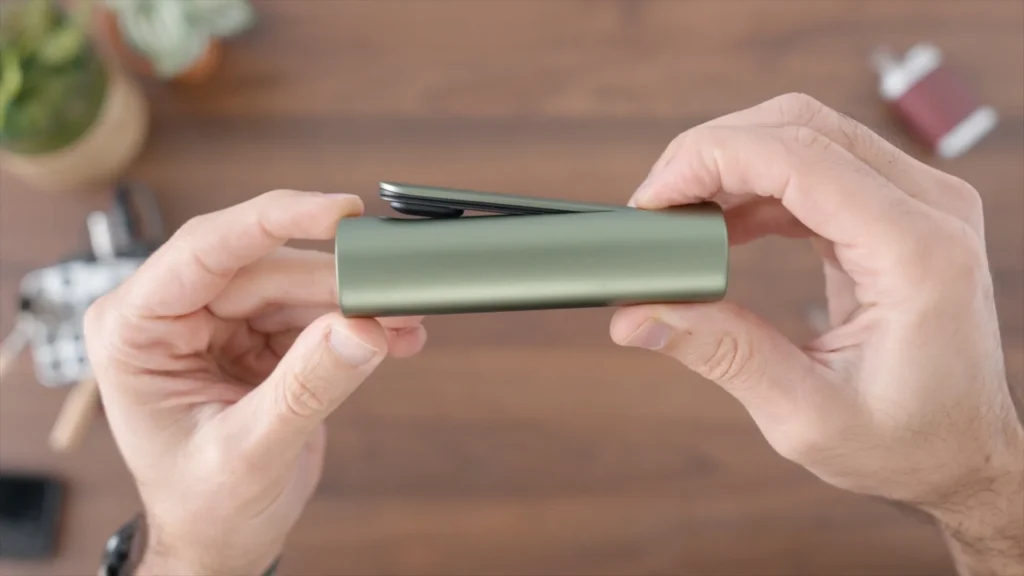
The FLOW is available directly from pax.com for $350 or from authorized dealers like vgear.com or vape-smart.com which usually include free gifts and have faster shipping than the pax official store.
Design
The FLOW keeps the familiar Pax silhouette, but it’s noticeably larger — taller, thicker, and heavier. It’s still compact and more pocketable than most portables, but compared to the Pax Plus, it’s definitely got more heft.

The unit has two removal components- the mouthpiece, and the chamber cover.
Since the original Pax 1, every generation has shared the same signature design and loading process — with the chamber at the bottom, opposite to the mouthpiece. With the FLOW, Pax has moved it to the side — or the top, depending on how you look at it — and I prefer it. The placement feels more natural.
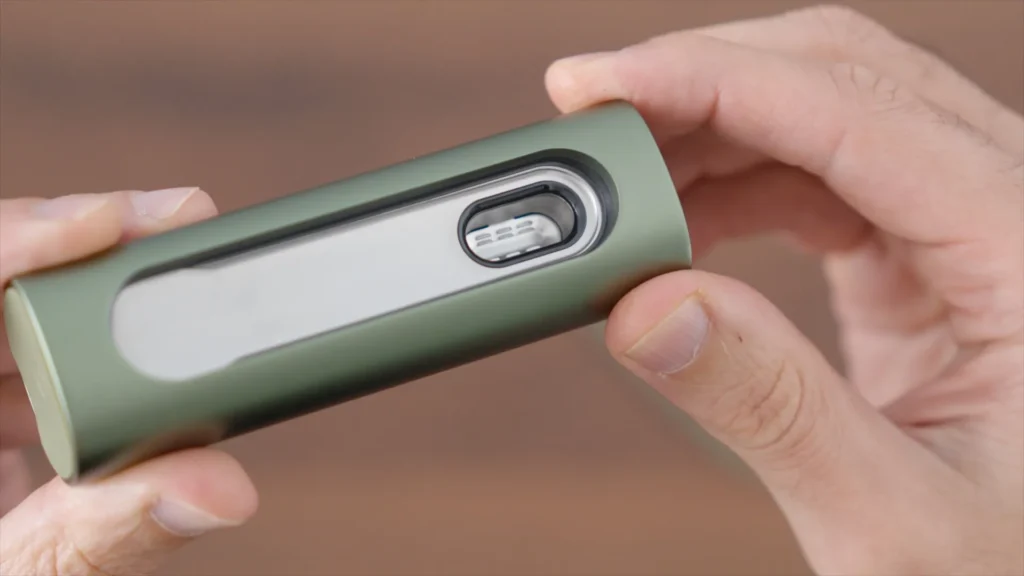
Chamber: The chamber is the same size, holding between a quarter gram and a little less than half a gram if you pack it tight. Speaking of packing — that brings me to the next big change: the heating system.
Hybrid Heating: convection+conduction
Unlike all previous Paxes, which relied solely on conduction (heating the herb through direct contact with the chamber walls), the FLOW adds convection to the mix — and this is big. One of Pax’s biggest flaws was uneven roasting: the edges touching the chamber would get hot quickly, while the center lagged behind, leading to sub-optimal, uneven extraction.

This new hybrid heating system fixes that completely, delivering even extraction similar to what you’d expect from something like the Venty. As you can see from this before and after picture, the herb is perfectly roasted.
Airflow and draw resistance
Another long-standing drawback of every Pax until now has been the tight, restricted airflow. In the Pax Plus, for example, air enters from the bottom, passes through the herb, and then travels through a very narrow channel up to the mouthpiece. That narrow path makes it harder to clean — and more importantly, it makes inhaling feel restricted, like drinking a thick smoothie through a thin straw. This is called draw resistance, and generally, the more “open” the draw, the better the experience.
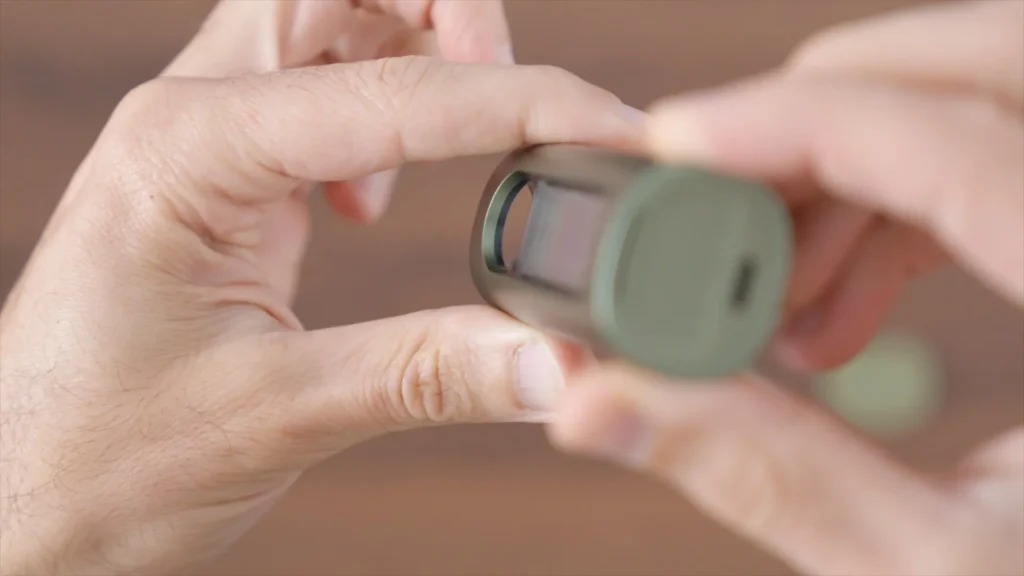
As the name suggests, the FLOW tackles this head-on. The vapor path now sits right under the cover, making it fully accessible for cleaning. More importantly, it’s a wide channel that runs straight to the mouthpiece with a large opening, allowing air to pass through easily. This improvement is especially important with the addition of convection heating, which relies on a strong flow of hot air to boost extraction. High airflow is essential for getting the best results from convection.
Air enters through a hole at the bottom, passes through the heating element that surrounds the chamber to pick up heat, and then flows into the chamber from the bottom. Combined with conduction heat radiating from the chamber walls, this process extracts the vapor and sends it up to the mouthpiece. Unlike previous models, the FLOW preheats the air before it reaches the chamber — and that makes a big difference in both efficiency and extraction.
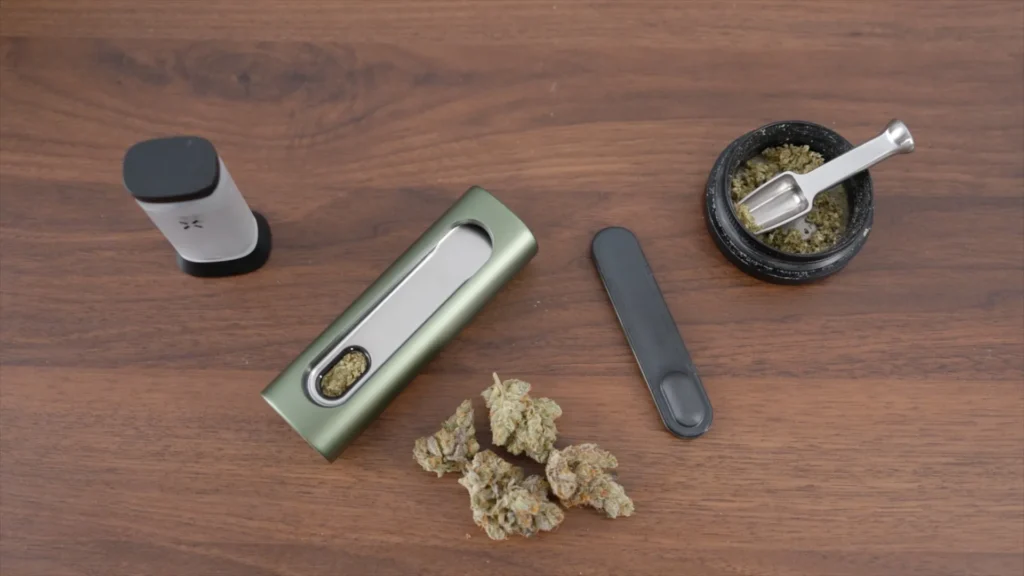
This approach is similar to how the Venty and Solo 3 work. I’ve torn both of those apart to look at their airpaths, and I’ll be doing the same with the Pax FLOW as soon as my second unit arrives.
Real time temp control
The Pax FLOW features real-time temperature control, making instant adjustments to keep the chamber at its intended heat level. This helps preserve pure flavor at lower temps and maximize extraction at higher ones without overheating. It offers four preset temperatures that aren’t user-customizable, plus a fifth mode that pushes the heat to the max — designed for use with water filtration.
Battery life / charging
As far as battery life goes, I got an average of 5-6 8-minute sessions on a full charge, which is nothing to brag about next as there are portables with triple that runtime. But, it is somewhat expected with a much smaller device.
One of the biggest upgrades is in charging. In my Pax Plus review three years ago, I said: “There’s no excuse for not having USB-C, either alongside or instead of the magnetic charger — especially from a ‘technology-forward’ company.” Thankfully, I don’t have to say that again. While the FLOW only ships with a cable (no wall plug), it’s finally USB-C instead of the old proprietary magnetic charger.
Proprietary chargers are a pain to travel with, and if you lose one on a trip, your device becomes a paperweight until you get a replacement. That actually happened to me with the magnetic charger during a skiing trip in Colorado — and it was annoying AF. USB-C solves that. Pax also offers an upright desktop charger. Either way, this is a big step forward.
Usage
Using the Pax FLOW is straightforward. Load up the oven (about 0.3g works best) with a medium-coarse grind and tamp it lightly. Power on with a press-and-hold, then tap the button to cycle through the five Experience Modes—essentially preset temperature levels:
- Stealth Mode – ~360°F (182°C) for minimal vapor and maximum discretion.
- Efficiency Mode – ~370–390°F (188–199°C), starting cooler and ramping up over time.
- Flavor Mode – ~380°F (193°C), tuned for rich taste in the first few pulls.
- Boost Mode – ~410°F (210°C) for dense, satisfying clouds.
- Bong Mode – ~437°F (225°C), hidden behind a triple cycle through the settings, meant for use with a bubbler or when you want maximum extraction fast.

Tip: If you’re coming from older Pax models, inhale faster than you’re used to. The FLOW’s hybrid heater is powerful and thrives on strong airflow—moving plenty of hot air is essential for proper convection extraction and full flavor delivery.
Pax Puck Press
The Pax Puck Press is a small but surprisingly impactful accessory for FLOW (or Plus) owners. It lets you compress your ground herb into uniform “pucks” sized perfectly for the oven, which makes loading quicker, prevents loose material from scattering, and promotes more even airflow through the load.
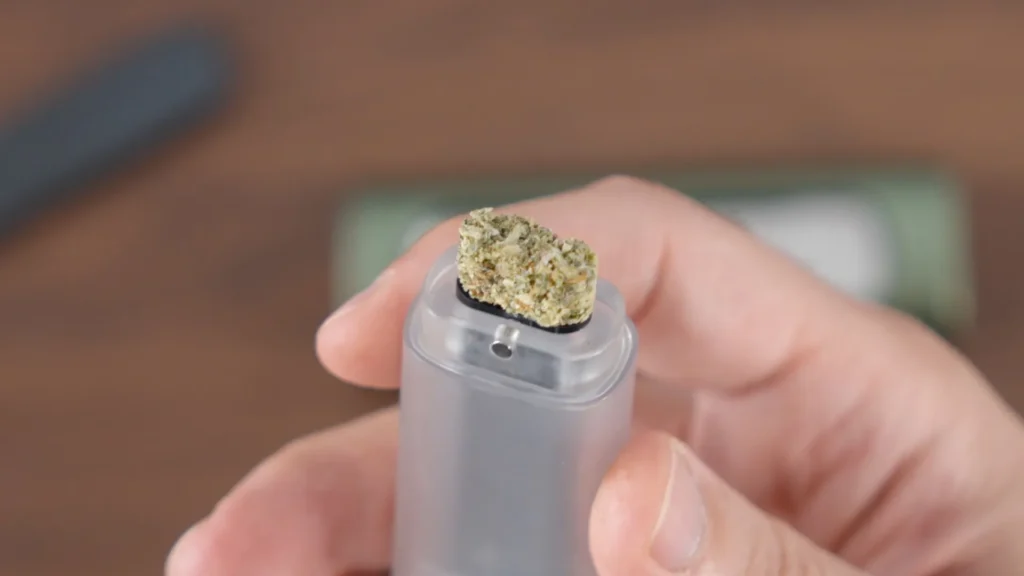
A properly pressed puck also holds its shape after stirring or mid-session checks, so you’re not constantly tamping things back down. The result is less mess, better consistency, and a smoother overall session—especially helpful when aiming for optimal convection extraction.
Performance & Vapor quality
When it comes to flavor, the Pax FLOW is easily two steps above the Pax Plus — or any previous model. The hybrid heating system makes a huge difference in purity.
On lower settings, vapor appears almost instantly—smooth, flavorful, and surprisingly visible without the long warm-up older models required. Mid-range settings balance taste and cloud density, while the top two modes produce satisfyingly thick exhales that remain comfortable on the throat.

The first three draws are incredibly flavorful, followed by another three or so with thicker vapor as the device fully warms up, and then a few more as the flavor tapers off and vapor production slows.
The new heating system also feels far more balanced and even, with extraction happening at the same rate throughout the chamber.
Airflow is where the FLOW really stands out: it’s wide and unrestricted, on par with bigger hitters like the Venty and miles ahead of the older, more restrictive Pax lineup. Even extended pulls are easy and natural.
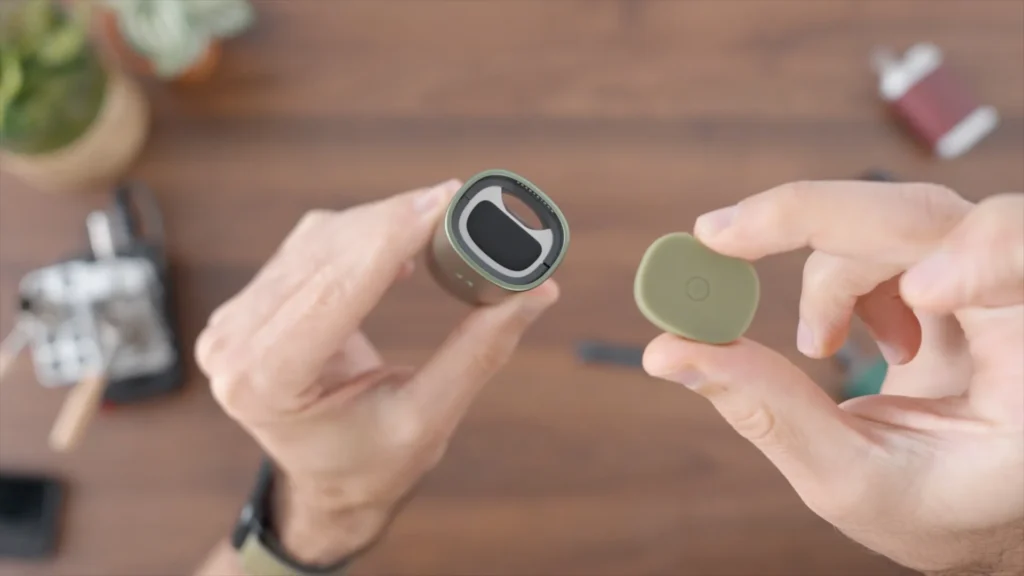
The Pax FLOW procured even extractions without that edge-hot/center-cool roasting that plagued earlier generations. The convection assist not only boosts extraction speed but also helps preserve flavor deeper into a session.
Drawbacks
Alright, let’s talk about the drawbacks — and there are quite a few.
The biggest one: this thing still gets hot. How hot depends on your temp setting, and it’s most noticeable toward the end of a session. But on the fourth temp, after eight minutes, holding the device becomes increasingly uncomfortable. When I first saw the larger size, I assumed it would run cooler. I was wrong — it gets just as hot as previous models.
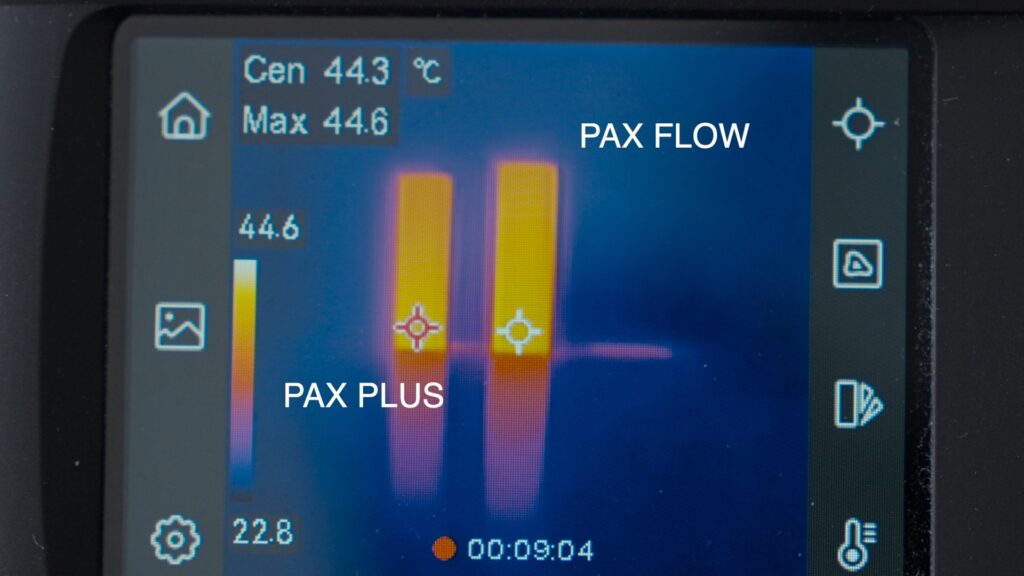
Pax does sell silicone grips to help, but heat is still a major drawback — one that most small vapes share. Small-bodied devices trade cooler, more comfortable operation for discreetness and portability. Larger units like the Venty or Solo 3 avoid this issue entirely. Pax’s outer shell is highly conductive, and its smooth surface traps heat instead of letting it dissipate. Grooves or textured panels could help it cool faster and keep your hand away from the hottest spots. I know that’s very “un-Pax,” but for me, function comes before aesthetics.
A few more drawbacks:
- No replaceable battery.
- No app, which means no firmware updates or advanced controls.
- No precise (+/- 1°) temperature adjustment — just the four presets plus the high-temp mode.
- The chamber cover was initially a drawback for me. I used to pop it off by mistake while holding the device, and it could be awkward to reattach after loading. But that’s really just a matter of adjusting my grip. To close the cover easily, insert the top part first, then the section that covers the chamber.
VapeGuy recommends for
The FLOW is ideal for Pax fans who’ve long wanted more airflow, faster extraction, and bigger clouds without sacrificing the brand’s discreet, polished design. It’s also a strong choice for those who value simple one-button operation and low-maintenance upkeep.
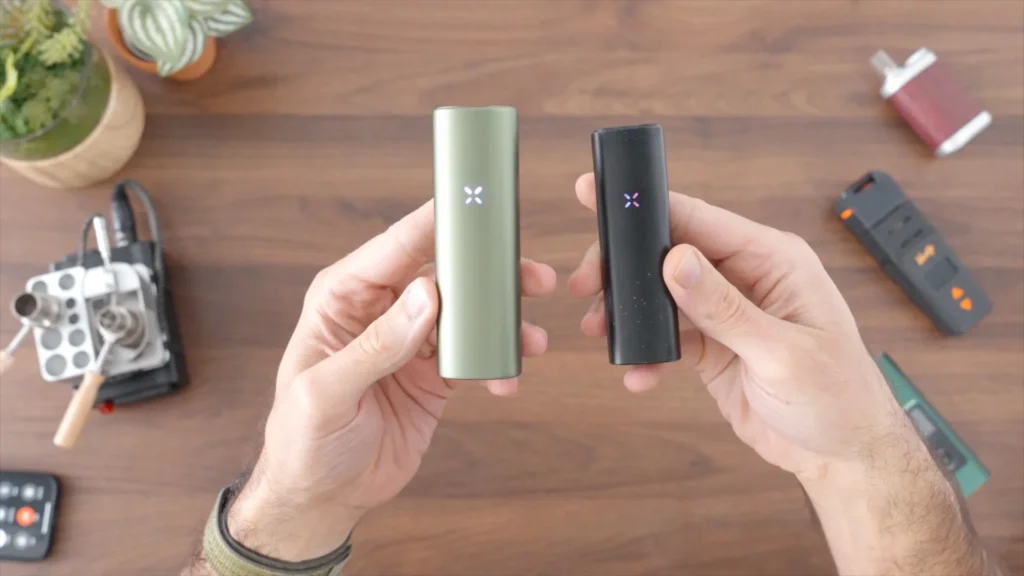
That said, if you’re chasing maximum power, all-day battery life, or the best dollar-to-performance ratio, stronger contenders exist—like the Tinymight 2, Venty, or Solo 3. At $350, the FLOW is the most advanced Pax yet, but it doesn’t beat every rival in sheer performance or features. It’s ultimately a vape for those who prefer Pax’s style and feel, rather than an undisputed “best-in-class” option. Check out my top picks in each category to find the best vape for your needs.
Pax FLOW vs. Venty, Solo 3, Tinymight 2

Why Buy the Pax FLOW
- Sleek, Pocketable Design – The FLOW delivers hybrid heating and open airflow in the most compact, polished package of the group.
- Simple Operation – One-button control and five easy-to-use Experience Modes make it one of the most user-friendly high-end vapes.
- Low-Maintenance Cleaning – The redesigned oven door and straight vapor path make cleaning fast and painless compared to older Pax models.
Why Buy the Venty (read review)
- Top-Tier Airflow & Power – Massive, adjustable airflow and robust heating put it near the top for cloud production and extraction speed.
- Long Battery Life – Exceptional runtime that easily covers multiple heavy sessions before needing a recharge.
- Consistent Heavy Hits – Maintains dense, satisfying vapor over extended draws without noticeable drop-off.
Why Buy the Solo 3 (read review)
- Exceptional Flavor – One of the best-tasting vaporizers available, especially for terpene-rich strains.
- Battery Endurance – Huge battery capacity makes it ideal for travel or all-day use without worrying about charging.
- Durability & Reliability – Proven Arizer build quality and replaceable glass stems that double as flavor-preserving vapor paths.
Why Buy the Tinymight 2 (read review)
- Hardest Hitter in the Class – Delivers instant, massive convection hits that rival desktop performance.
- Highly Customizable – Adjustable temp control, swappable batteries, and various stem options for dialing in your perfect session.
- Rapid Heat-Up – Ready in seconds, making it perfect for quick, on-demand hits without sacrificing potency.
Bottom line
The Pax FLOW isn’t perfect, but it’s still one of the best ultra-portables out there. I don’t think it’s fair to compare it to “portables” like the Solo 3 or Venty — even though all three are in the same price tier. The Solo 3 is fantastic, but I wouldn’t feel comfortable walking into a room with it in my hand or pocket, let alone trying to use it discreetly. It’s more of a home vape.
A more fair comparison would be the Tinymight 2, and I’m working on a video that compares all four of these side-by-side.
Should you buy it? If you’ve never liked Pax, this version probably won’t change your mind. But if you’ve owned any of the previous models and they’ve worked well for you, the FLOW is an upgrade in every way. It’s replaced my Plus as my go-to “out of the house” device.